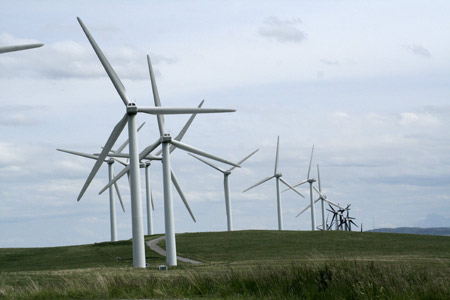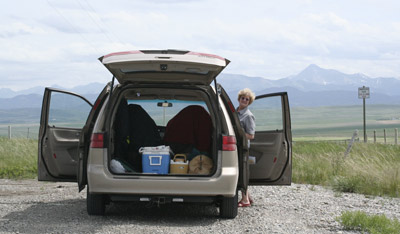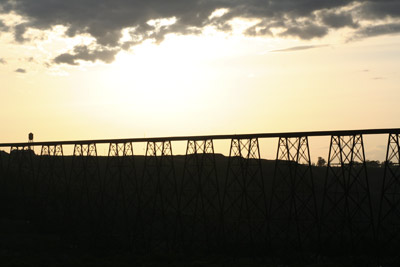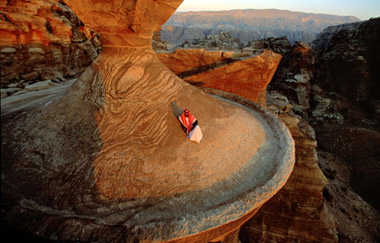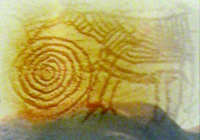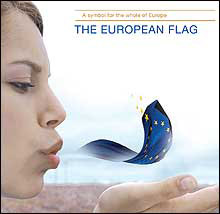Alberta Trip Days 5 & 6
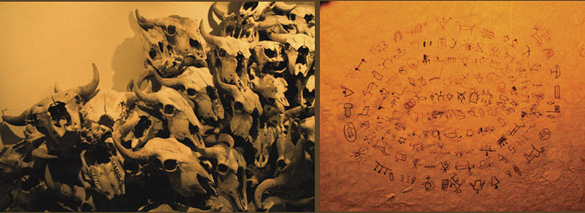
Left: buffalo skulls.
Right: Winter Count Robe (compare to the Lakota ones)
Leaving Lethbridge we headed west towards BC. We decided to take a short detour from Fort Macleod to a place where the foothills of the Rocky Mountains meet the great plains, one of the world’s oldest, largest and best preserved buffalo jumps known to exist –Head-Smashed-In Buffalo Jump*. Designated as a UNESCO World Heritage Site in 1981, Head-Smashed-In has been used continuously by aboriginal peoples of the plains for more than 5,500 years.
We had long heard about it and now was our opportunity to see this architecturally interesting interpretive centre built into the cliff side in staggered levels, along with an outdoor viewing area overlooking the jump. It’s a beautifully designed and organized museum depicting the ecology, mythology, lifestyle and technology of Blackfoot peoples within the context of available archaeological evidence. Interpretation of these themes presents the viewpoints of both aboriginal peoples and European archaeological science.
We noticed First Nations staff here including a guide taking a group around, telling the stories and demonstrating tool-making for example. I always thought the “smashed head” referred to the buffalo, but according to the myth of the place, it was that of a young curious lad who went under the cliff to watch the buffalo come down in the hunt. So many heavy beasts came down that he was crushed by the pileup. Another fact that I found extremely disturbing was how quickly the buffalo was decimated by white hunters (in about 2 years, though I can’t remember exactly and I forgot to take a pen in with me!) and how this destroyed the lives of the Blackfoot people.
This place is well worth a visit if you’re in the area. In the meantime, have a look at their site*.
As we continued west, the glorious views of the mountains were different again. Soon we approached a huge area of boulders spread out from the mountains on our left and across the other side of the highway on upwards. This is the Frank Slide that happened 4:10 a.m. on April 29th, 1903. A 90 million ton mass of rock fell from the summit of Turtle Mountain onto the coal mining town of Frank, Alberta. Within 90 seconds, at least 70 people were dead – most still in their beds. We’ve driven through here before many years ago (and a few days ago) but now there is the The Frank Slide Interpretive Centre high up above the slide area. Have a look at another virtual tour. We didn’t have enough time to go through the Centre, but another time! It was impossible to capture the entire devastation in one photo, the one below shows only part of it, looking west.
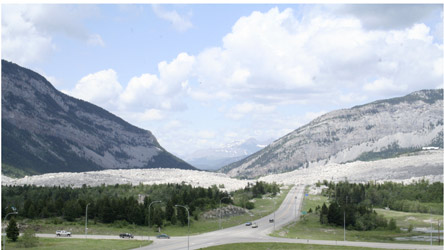
Our destination for the evening was the Bavarian style town of Kimberley, BC. We chose this because we’d never been here before. We stayed in a really lovely and friendly bed & breakfast in a beautifully built house with European styling and quality in the growing new area near the ski hill. In the evening we sauntered around the Platz in the centre of Kimberley, looking at the decorated shops and restaurants.
Here we were approached by a charming older gentleman who lived here and who turned out to be a healer with an interesting life. We ended up having an immensely fascinating and enlightening conversation over dinner. Amazing how one can sometimes connect with a stranger and in short time become friends, something that does not happen to us often. What a wonderful feeling, and we do hope to meet again. (Sorry no photos of Kimberley, we were too busy talking!)
The next day, we decided to head north along Hwy.95 instead of going back the way we came along the Crowsnest, again to see some areas new to us. It’s a lovely valley, especially between Fairmont Hot Springs and Radium and it was an easy drive to Golden on the Hwy.1 or the Trans-Canada. From here it’s a scenic and easy through the Rockies then down the Coquihalla to Hope, and then home. It was a great road trip seeing new parts of some corners of BC and southern Alberta!
(In case you missed the earlier postings about our Alberta Trip, here are Day 1, Day 2, Day 3 and Day 4.)
* March 27, 2014: Links updated due to changes since original posting.

